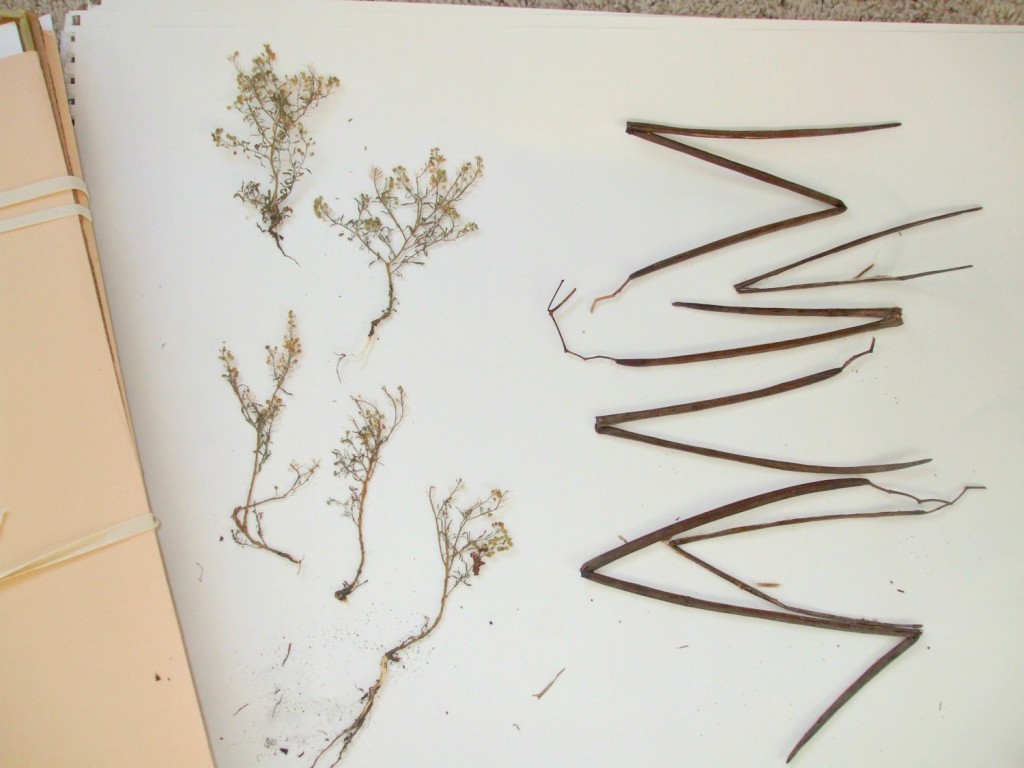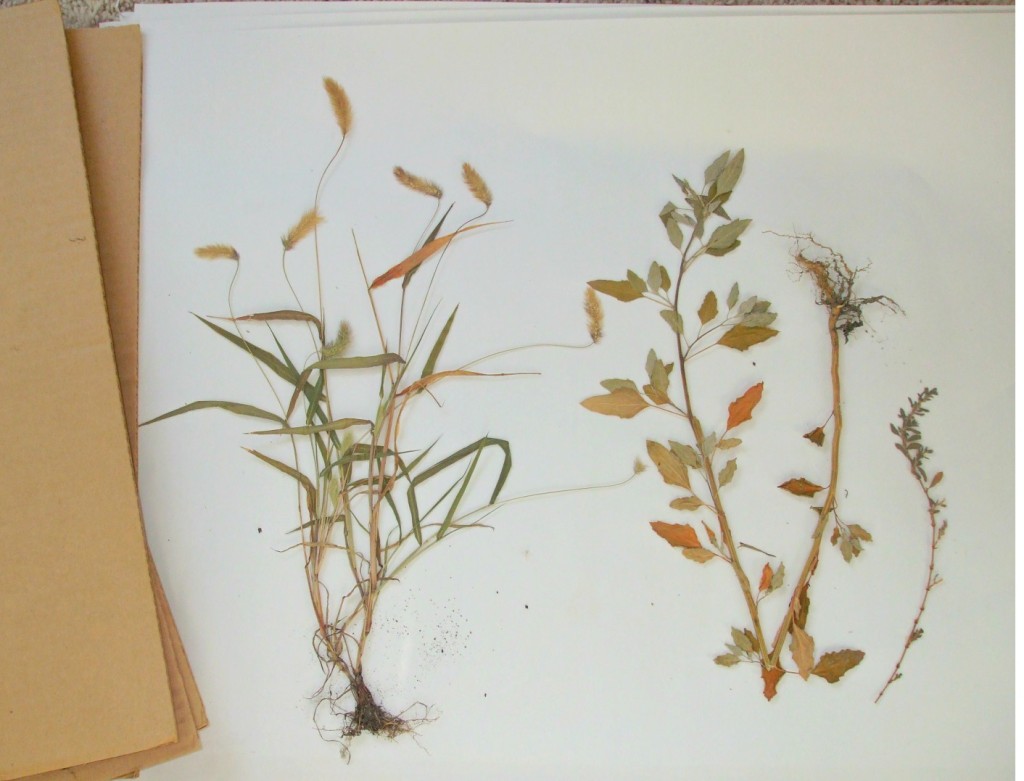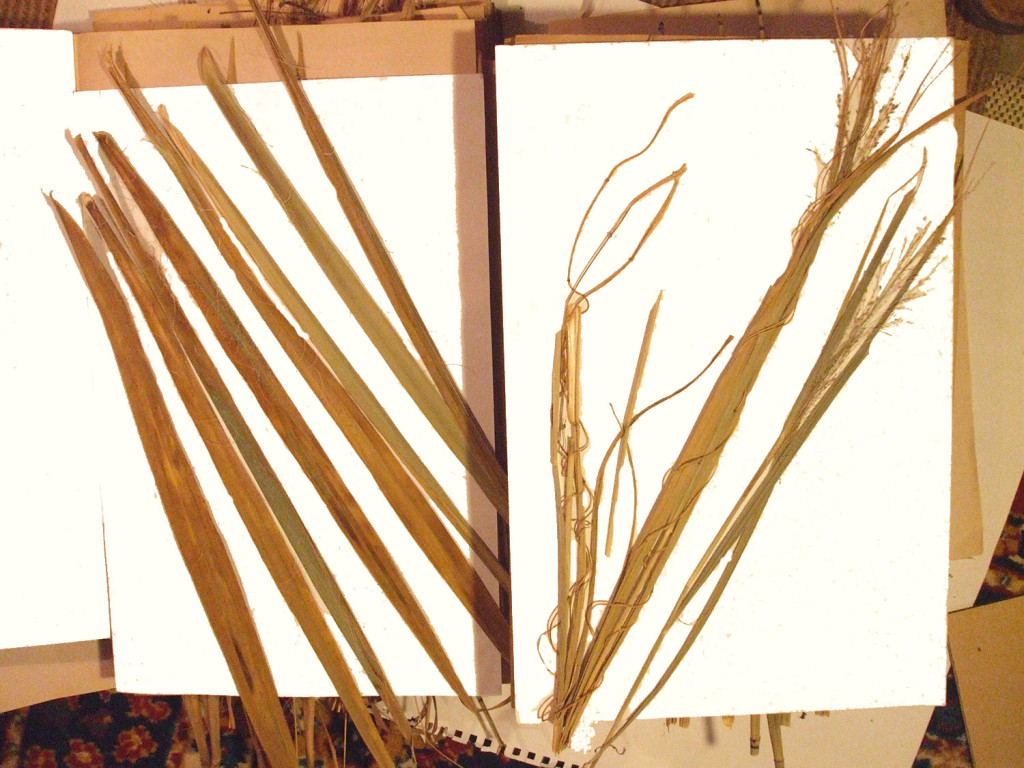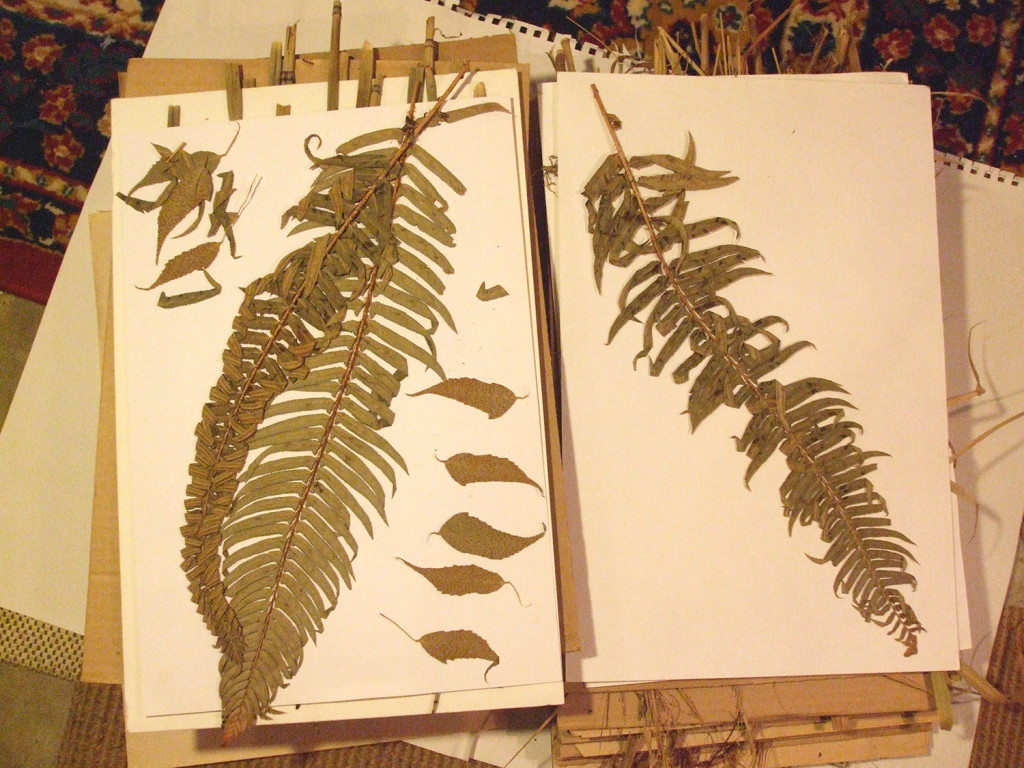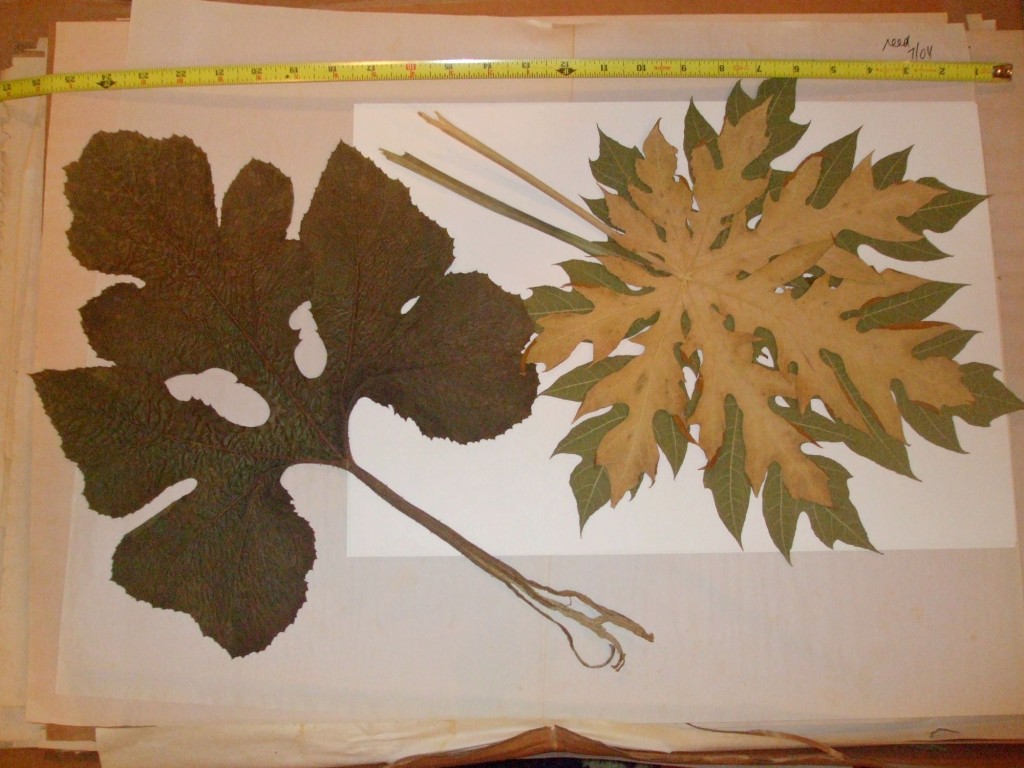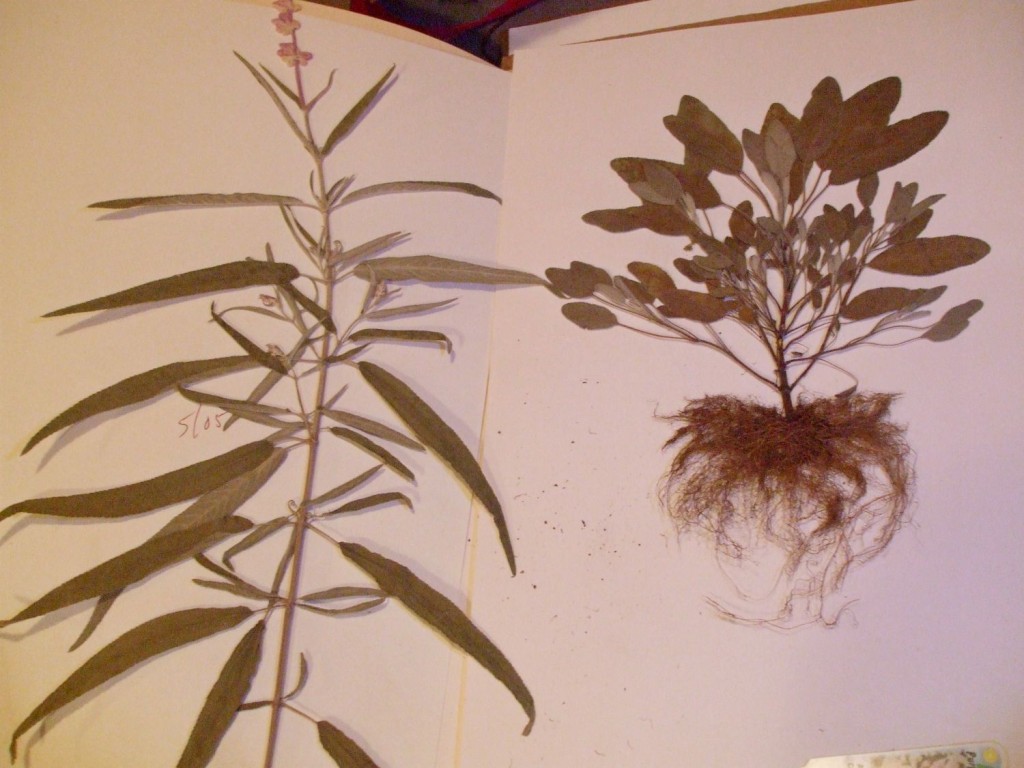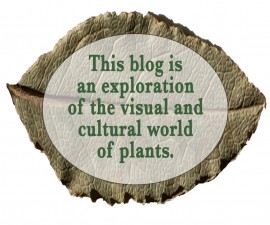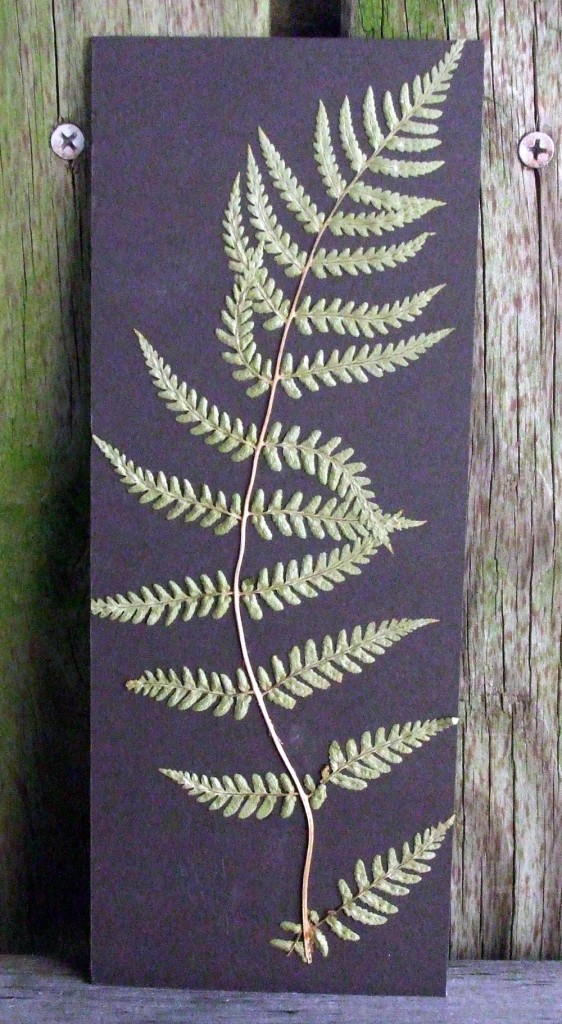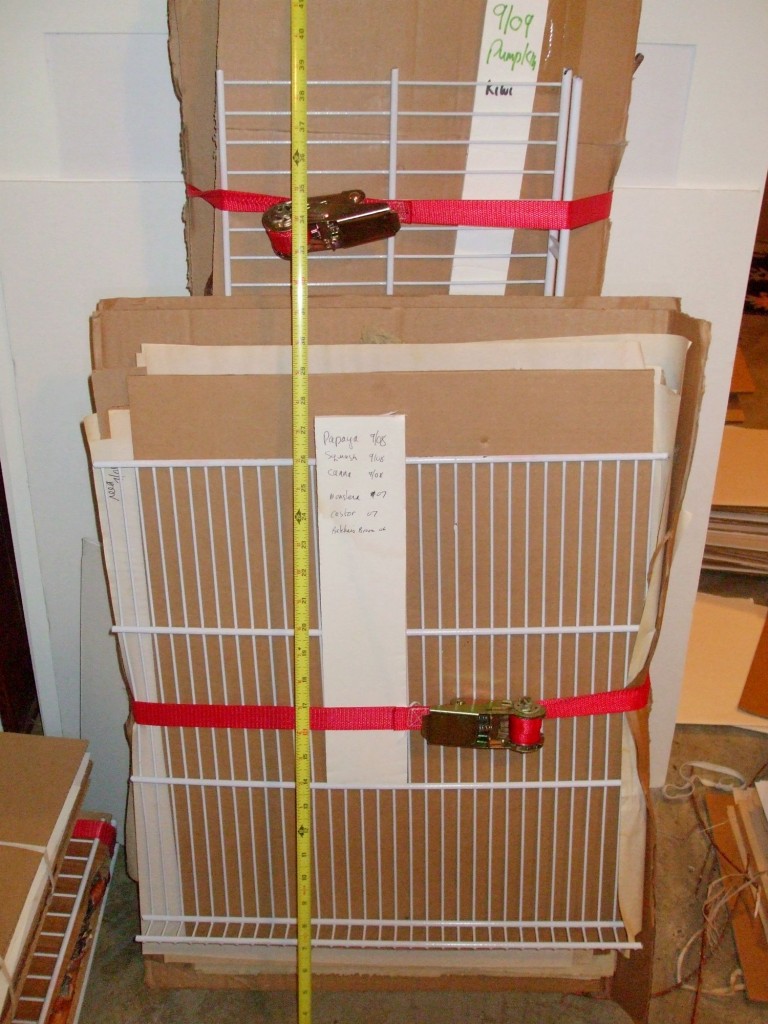 The inside of every plant press is full inspiration. The photos in this post will show a small amount of the plant material I’ve collected over the years, including the sourcing info, background data and collection dates for some of the items.
The inside of every plant press is full inspiration. The photos in this post will show a small amount of the plant material I’ve collected over the years, including the sourcing info, background data and collection dates for some of the items.
The presses themselves were handcrafted based on the world-wide industry standard botanical press size 12″ x 18″. Most of the plant material was collected to fit in the botanical press standard .
One benefit of having presses that size is that I can buy and use industry standard blotting paper and cardboard.
Some of the presses, which I made to be easy to carry and maximize airflow, were built way oversize to acommodate larger items, like squash, papaya, elephant ear and castor leaves, and branches from trees, stalks of wheat, and the tall 6-row barley I had sent from Washington for a project for a local brewer.
In the fall of 2004 I took a trip to the famous botanical garden in New York (in the Bronx). I noticed tons of escaped and wild and weedy plants on the walks to and from the herbarium. I made the collected plant material my souvenirs.
Above is another sample of some very aggressive plants along my walking route to the N.Y. Botanical Garden Herbarium in the Bronx. Some scientific reports show this herbarium as the second largest in the world
Left: Yucca (from Platte County) and Right: Grasses bound by vine.
Like Prickly Pear, Yucca is a both native to the area and strange to see in the rolling green hills of Platte County.
It’s unfortunate, in my opinion, that while it’s in the same family as agave, Yucca cannot be made into tequila.
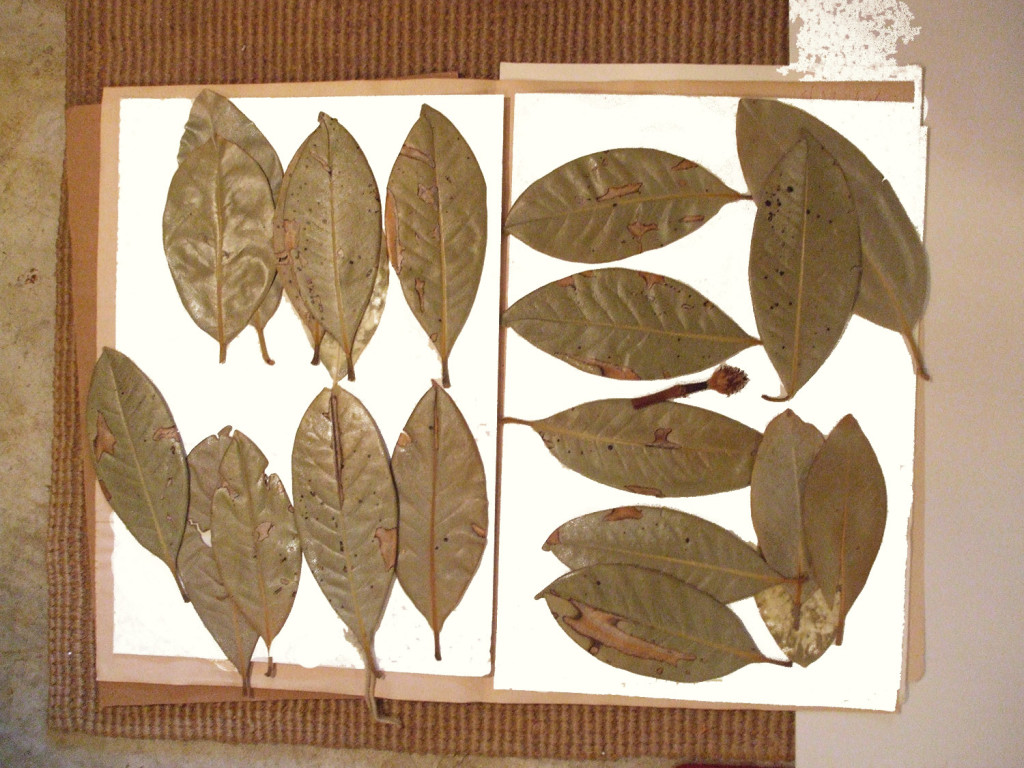
Left and Right: Distressed Magnolia.
A severe storm in 2003 caused a beautiful and unique reaction in the Magnolia leaves that were out at the time.
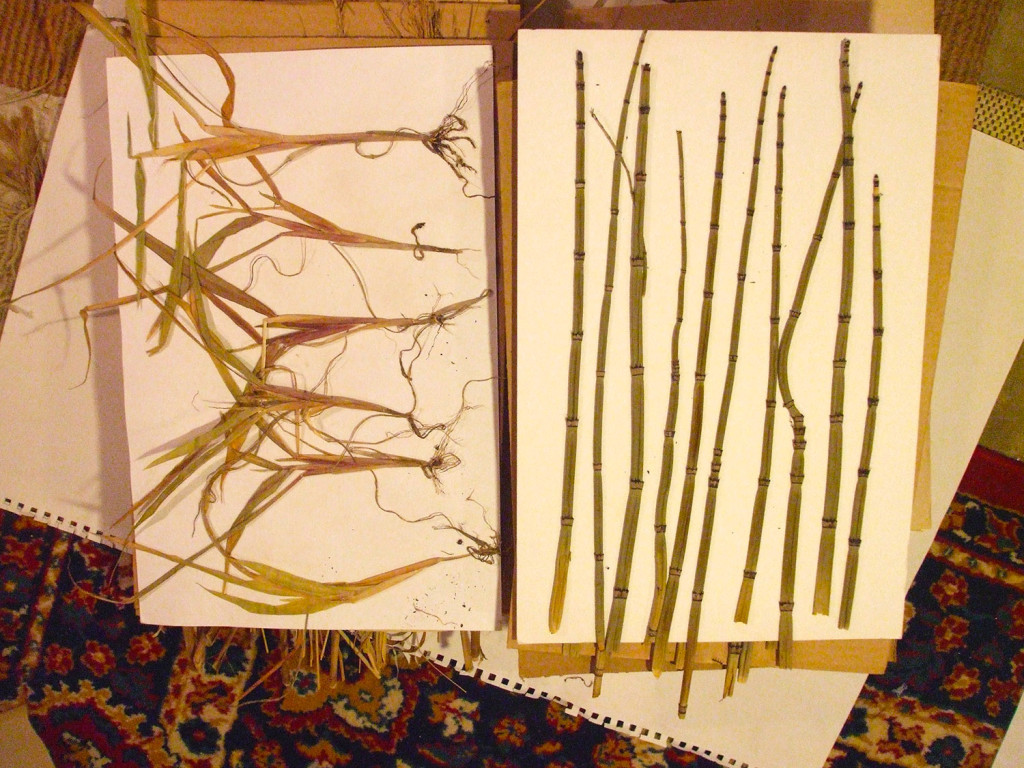 Left: Young Corn and Right: Equisetum
Left: Young Corn and Right: Equisetum
I planted corn in my vegetable garden in early May 2008. A variety of colors in young corn emerged at the center above the roots and radiate out.
Equisetum, or Winter Scouring Rush, is part of an ancient family of plants that thrived millions of years ago, before flowers exited. Today it remains one of the only species in the family to survive. It reproduces by spores, which are located in the tips, and are dispersed by air (and wind). No pollination is needed.
I couldn’t help but grab a few fronds from a friend’s wedding. The finished piece is one of my favorites.
The dots on the leaves are spores, and are the basis for their reproduction.
Left: Squash and Right: Papaya Leaves
A few items from a larger press, about 25″ x 29″ are shown here.
Leaves naturally yellow when they receive a lot of water. The squash, from a neighbor’s vegetable garden, went in green and came out a deep metallic black/brown. .
The large sage barely fit into a standard size press.
It’s always a challenge to remove dirt from the roots of plant. The roots are way stronger than one might think.
Sometimes I wash them outside to remove the dirt, then press them. Other times I’d shake off the dirt and then use a small paint brush to remove whatever I could. Both ways resulted in some root loss, but not enough to matter.
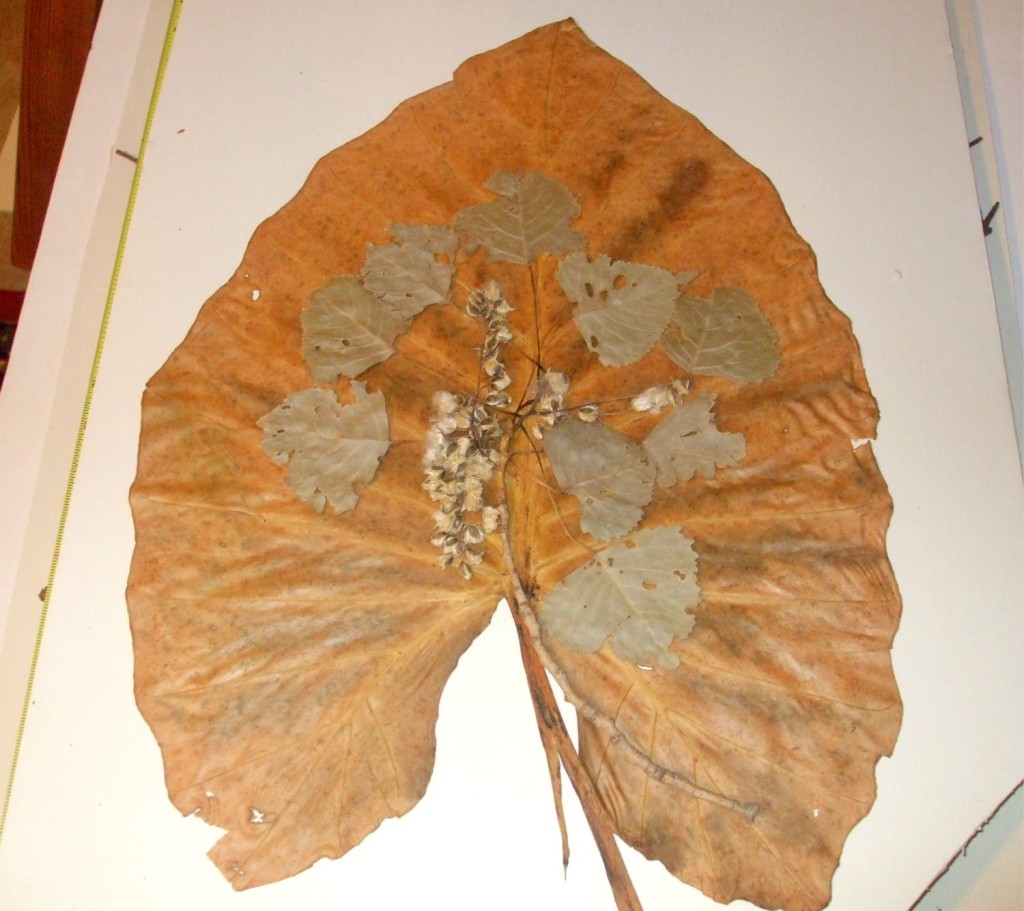 Center: Cottonwood on Elephant Ear
Center: Cottonwood on Elephant Ear
I have a few very large presses that can accommodate items the size of this Elephant Ear. All the cardboard for these presses have to be collected and cut the same size by hand.
The color of this Elephant Ear became much more interesting during the drying process.
All plants, including cottonwood, continue a living process inside the presses. When I collected those branches, the pods were entirely closed. After a day or so, I opened the press and applied glue to the pods, which continued to open. The glue dried at their half way point. Perfect!
At some point, the living process stops, and because of the absence of water, life simply becomes suspended, not dead. In the material world, death usually means a change of form (decomposition), or transformation of some kind, because water is present. Water is required for all change to occur.
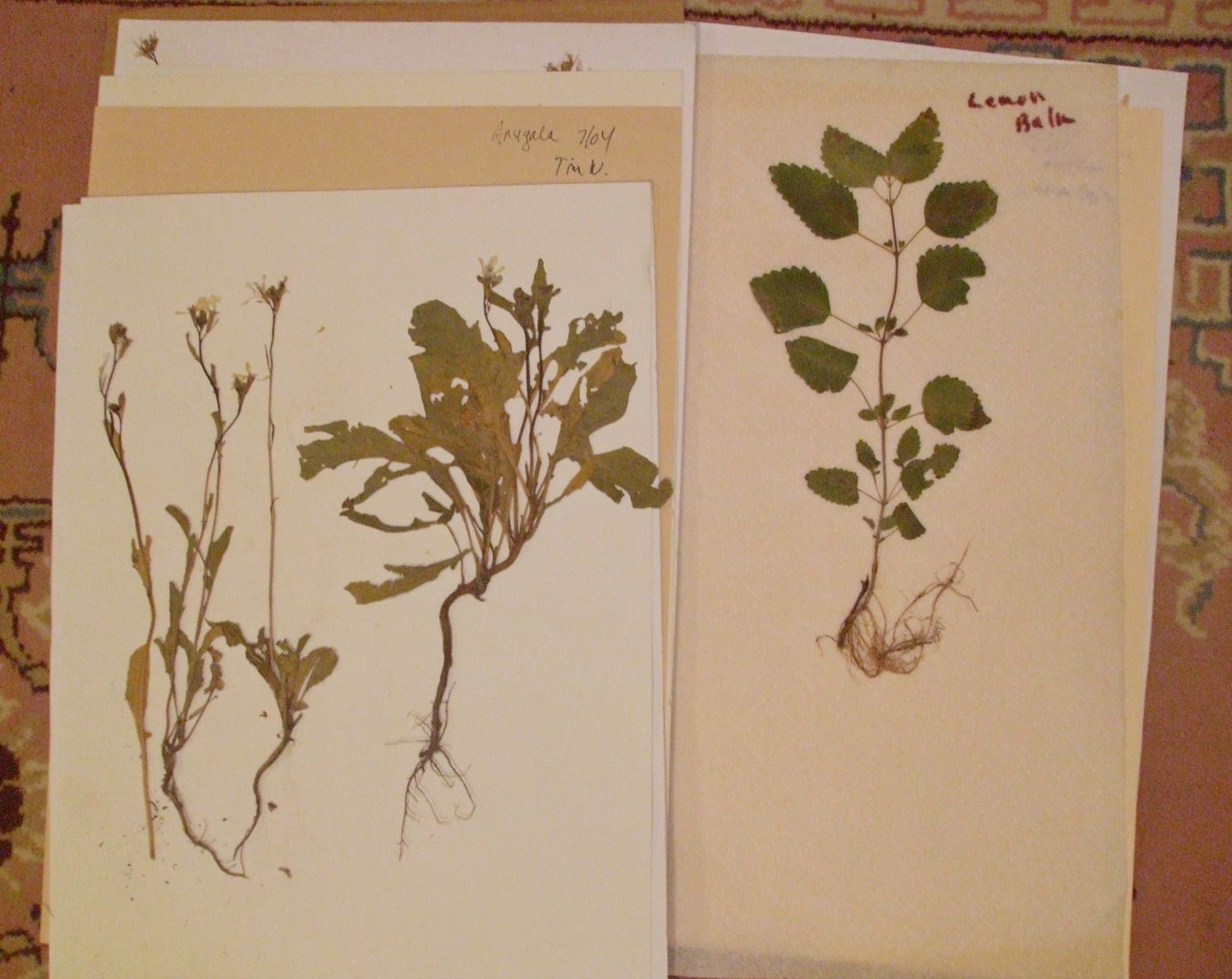
Left: Arugula and Right: Lemon Balm (Sweet melissa)
This arugula is from an organic farm north of the river. The bugs in this part of the world make organic farming especially challenging.
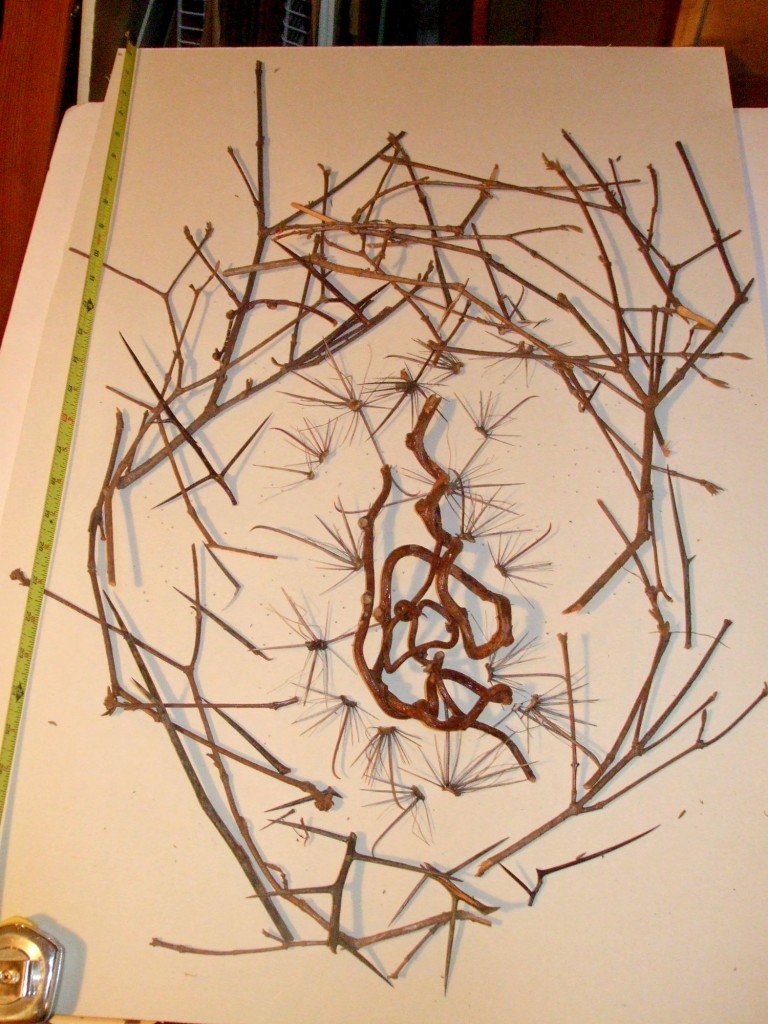
A compilation: viburnum twigs on the outside, Fish Hook thorns I collected and pressed in Airzona, Honey Locust thorns (treacherous to collect and press and maintain), and the inside is some cool Kiwi vine (native to Asia, it’s readily available in most florist shops, which is where I got it).
The partial collection of preserved plants (called an herbarium) is below (along with an experiment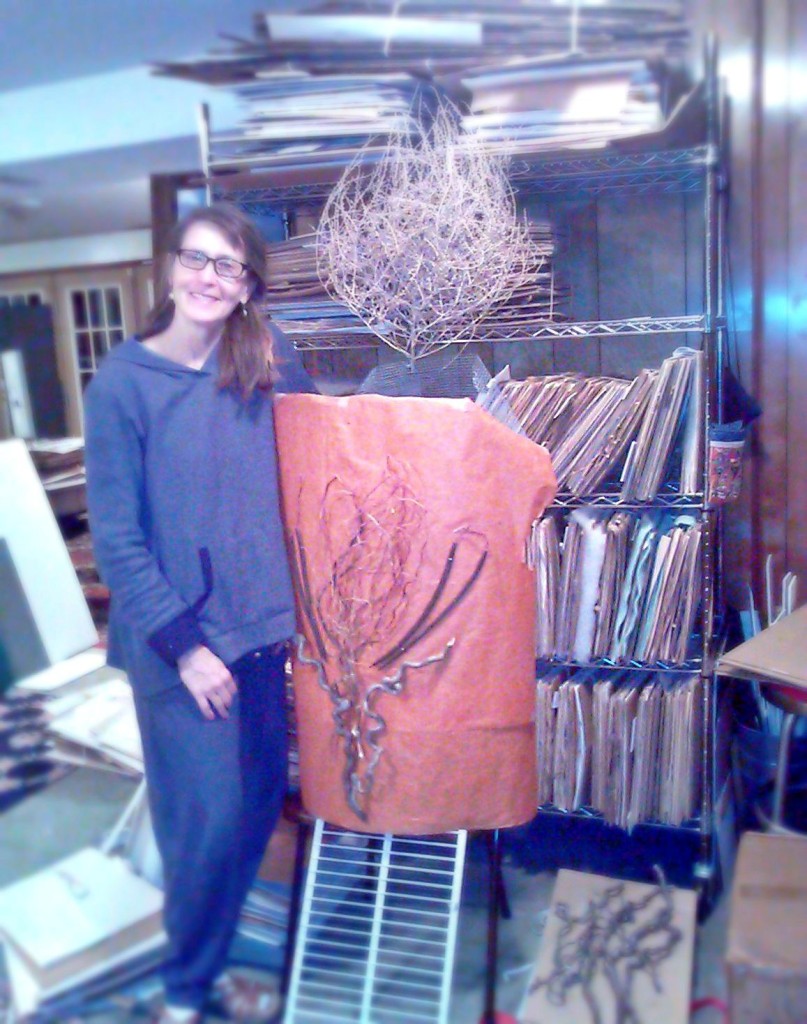 in 3-D).
in 3-D).

